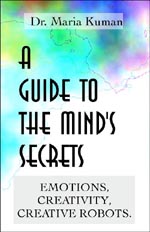
T
his book reveals the secrets of the mind and the treasures of the black box called the subconscious. These treasures are intuitive creativity, spontaneous remission, telepathy, psychic events, dowsing, mental rehearsal, and eidetic imaging.

The book reveals the role of emotions in creativity. We are emotional creatures and our passion to create has no limits. But emotions remain outside the scope of our science regardless that research shows that emotions enhance memorizing and play essential role in creativity.
Ironically, we have built a science based only on logic, which cannot deal with emotions. But if intuitive creativity is based on emotions and we want to build artificial intelligence with creative ability, emotions need to be studied.
This book reveals what intuitive creativity is and how to attain this state. It also teaches how to achieve success in performance through mental rehearsal.
The book also reveals the secrets of subconscious learning. If adopted by our educational system, it will make the school study effortless and fun. At the same time, it will allow us to give more information without making the students feel overloaded.
“W
ith the accuracy of a neurosurgeon, the author dissects and reveals the secrets of the mind: telepathy, intuitive creativity, eidetic imaging, dowsing, etc. These would puzzle many, but being a holistic scientist she explains them with ease and authority.
”
Owen Switzer,
Knoxville
